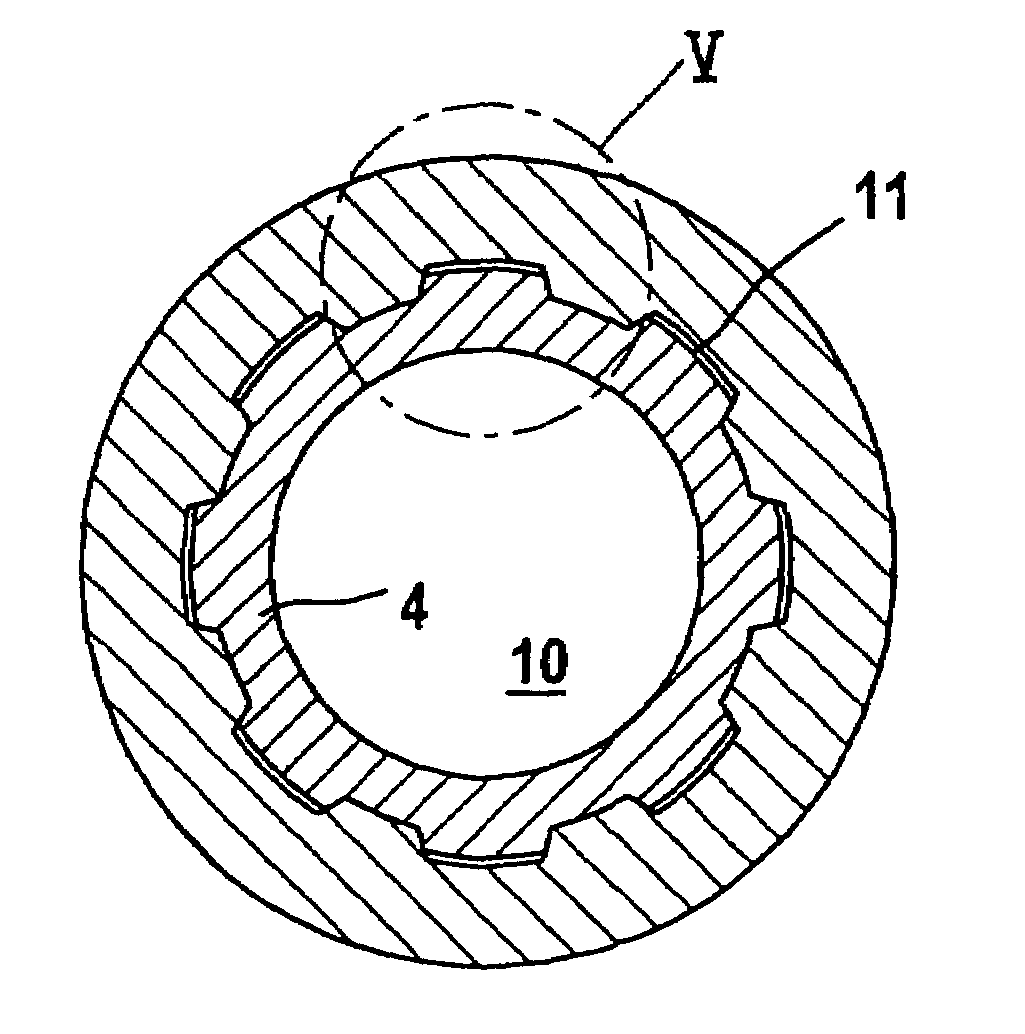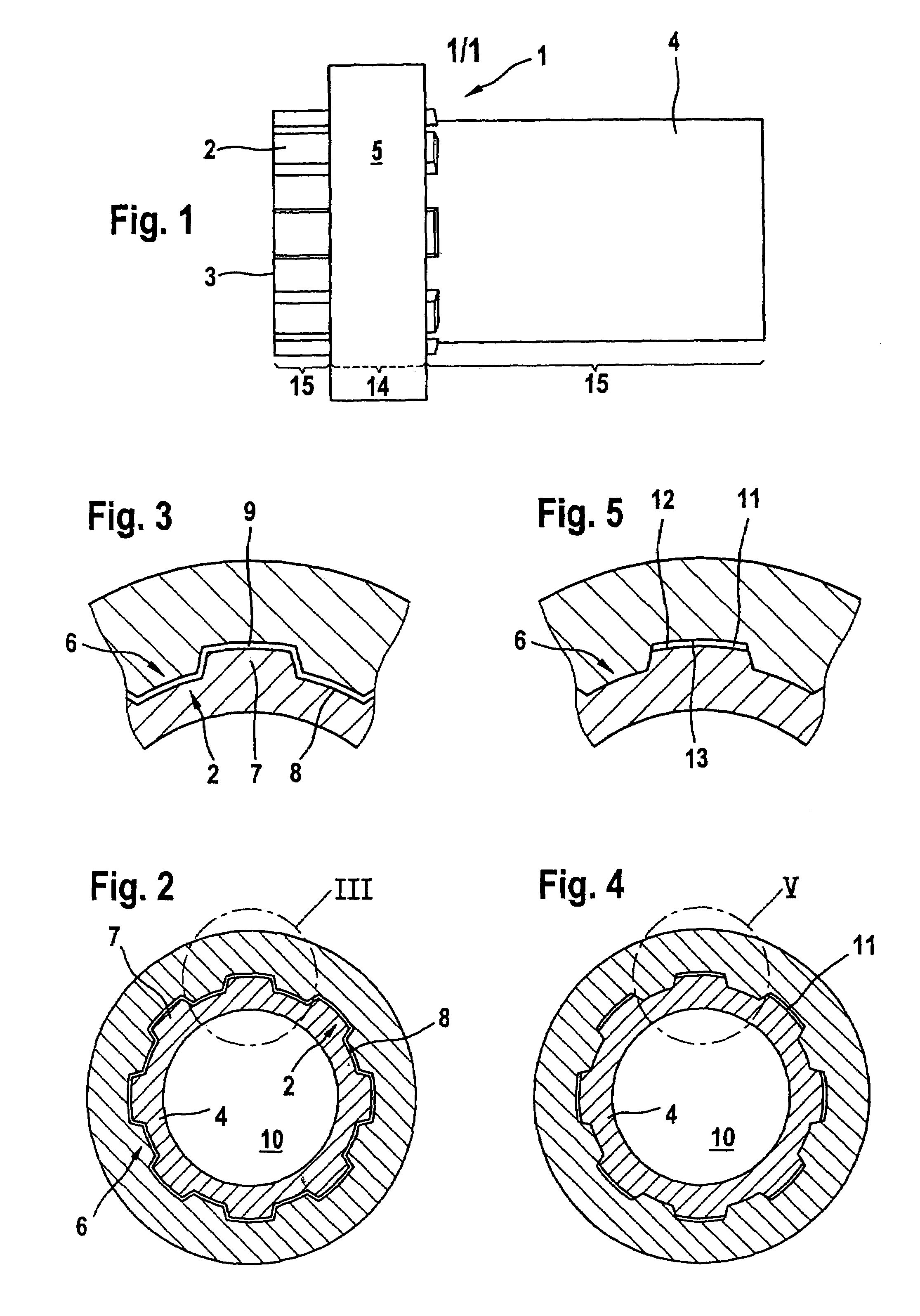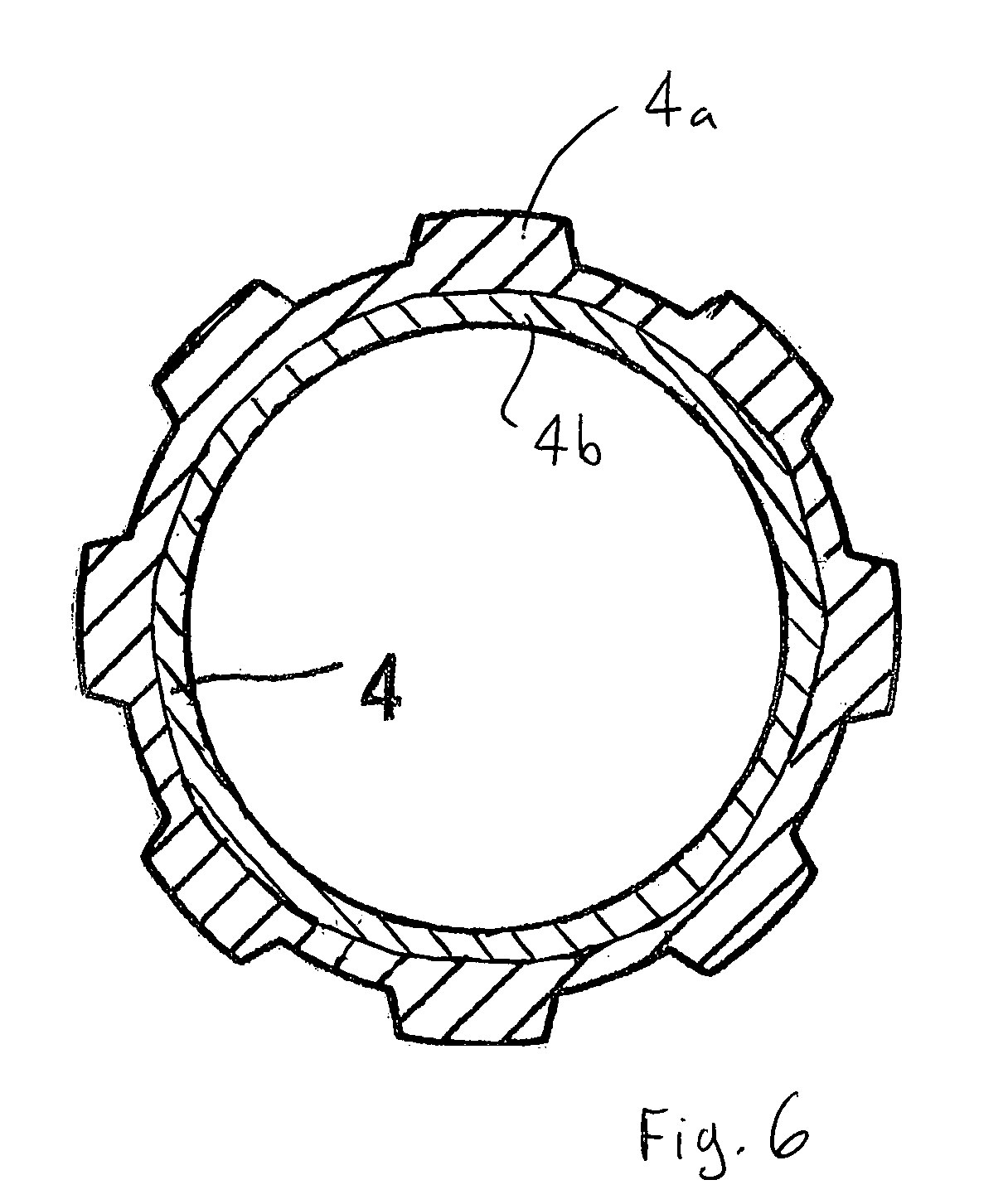Method for the production of a shaft-hub connection
a technology of shaft and hub, which is applied in the direction of couplings, manufacturing tools, and gearings, etc., can solve the problems of increasing the cycle time during the making of the connection, affecting the quality of the connection, so as to avoid any damage to the toothings which is associated with this, and the production method is simple and cost-effective
- Summary
- Abstract
- Description
- Claims
- Application Information
AI Technical Summary
Benefits of technology
Problems solved by technology
Method used
Image
Examples
Embodiment Construction
[0013]FIG. 1 illustrates a shaft / hub connection 1, in which an end portion 3 of a hollow shaft 4, the end portion being provided with an external toothing 2, projects through a hub 5. The hollow shaft 4 may be designed as a toothed shaft or, as here in the exemplary embodiment, as a splined shaft. The splined shaft can be produced in a simple way, for example, by drawing a tube or by milling that portion 3 of the hollow shaft 4 which is intended for the formation of the toothing. The corresponding internal toothing 6 of the hub 5 can be generated by reaming or else by milling. Referring to FIG. 6, is also conceivable for the hollow shaft 4 to be formed from two separate structural parts, a toothed rim 4a and a smooth-cylindrical tube 4b, the toothed rim 4a which forms the external toothing 2 of the hollow shaft 4 being pushed onto the tube into the desired axial assembly position and subsequently being fastened unreleasably to the tube, for example, by welding or by a partial wideni...
PUM
| Property | Measurement | Unit |
|---|---|---|
| pressure | aaaaa | aaaaa |
| pressure | aaaaa | aaaaa |
| dimensions | aaaaa | aaaaa |
Abstract
Description
Claims
Application Information
 Login to View More
Login to View More - R&D
- Intellectual Property
- Life Sciences
- Materials
- Tech Scout
- Unparalleled Data Quality
- Higher Quality Content
- 60% Fewer Hallucinations
Browse by: Latest US Patents, China's latest patents, Technical Efficacy Thesaurus, Application Domain, Technology Topic, Popular Technical Reports.
© 2025 PatSnap. All rights reserved.Legal|Privacy policy|Modern Slavery Act Transparency Statement|Sitemap|About US| Contact US: help@patsnap.com



